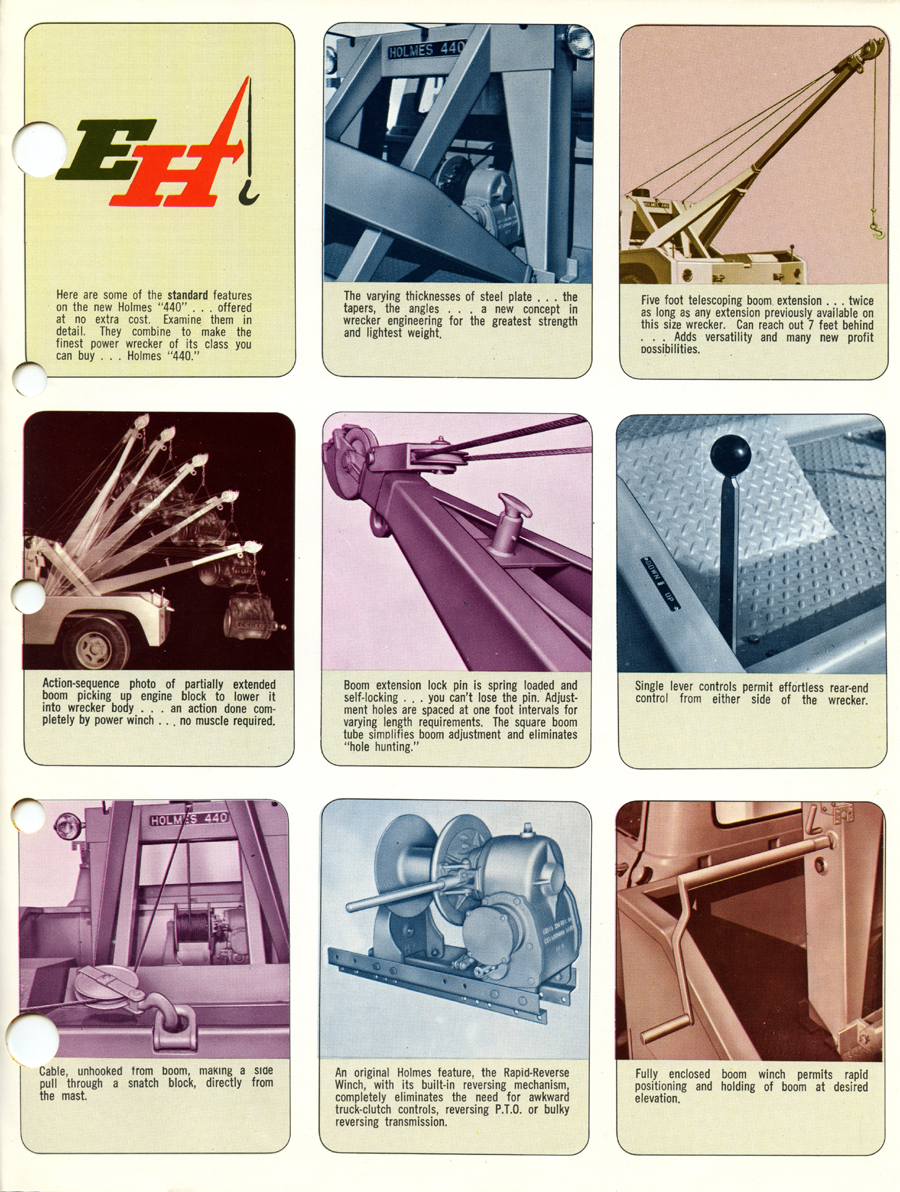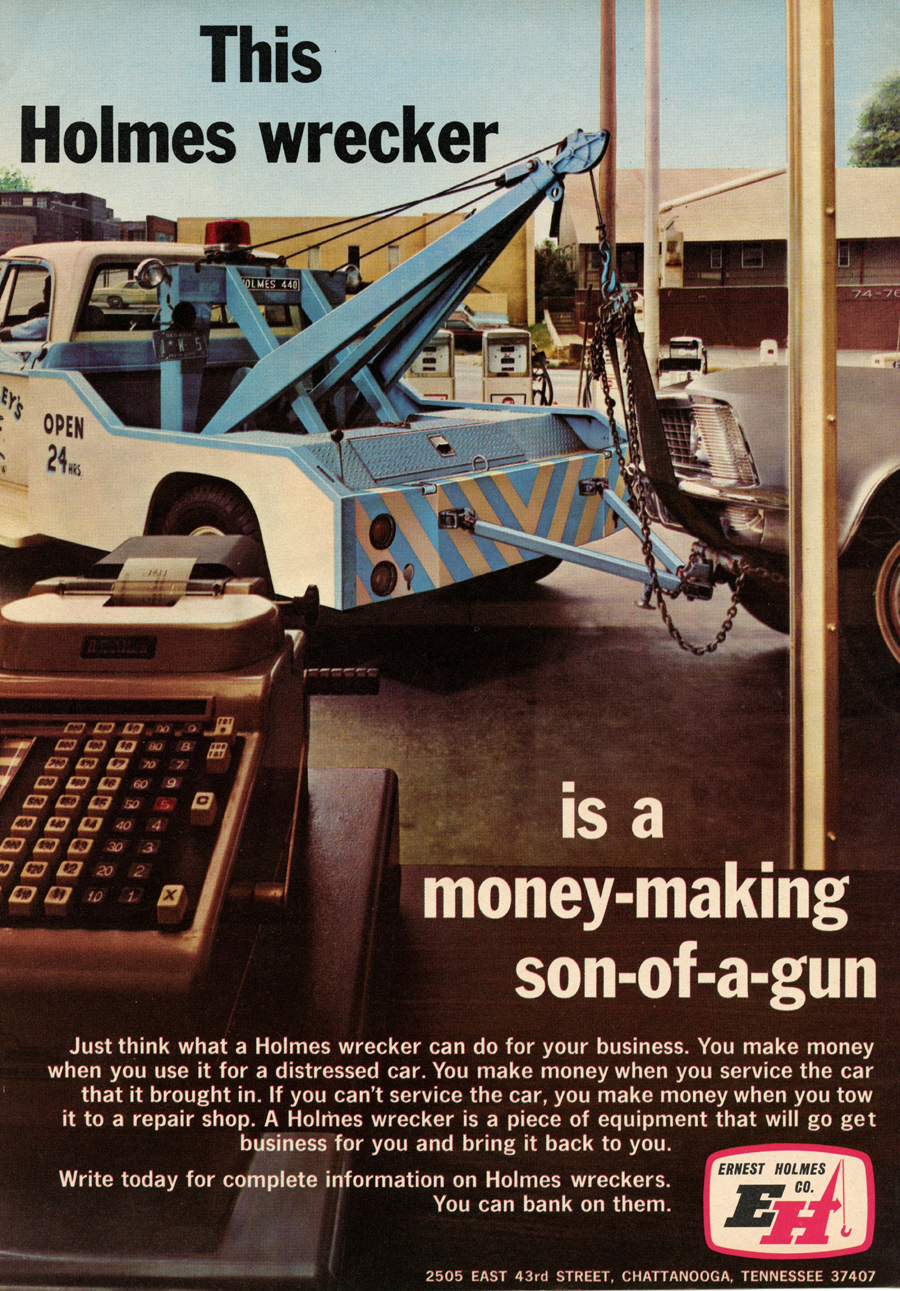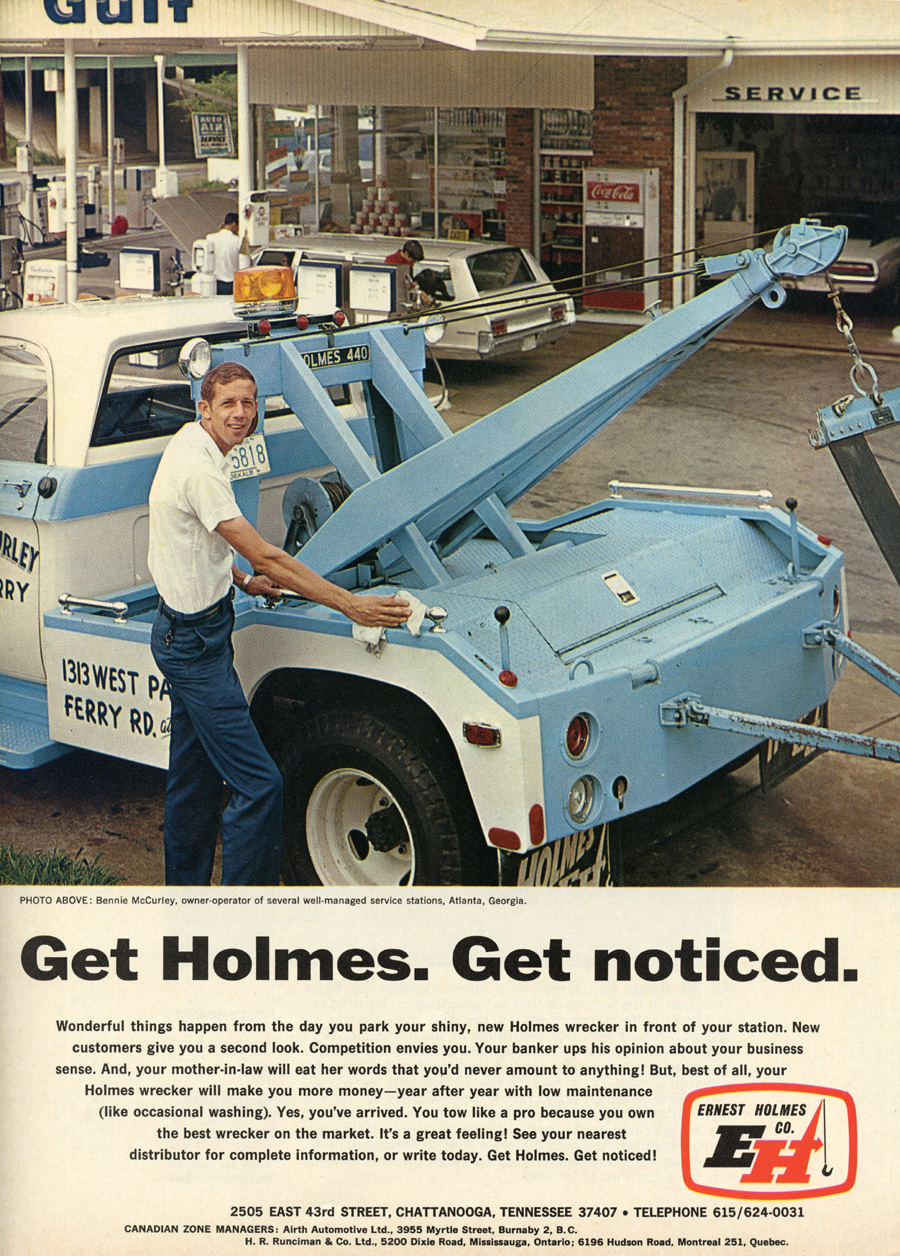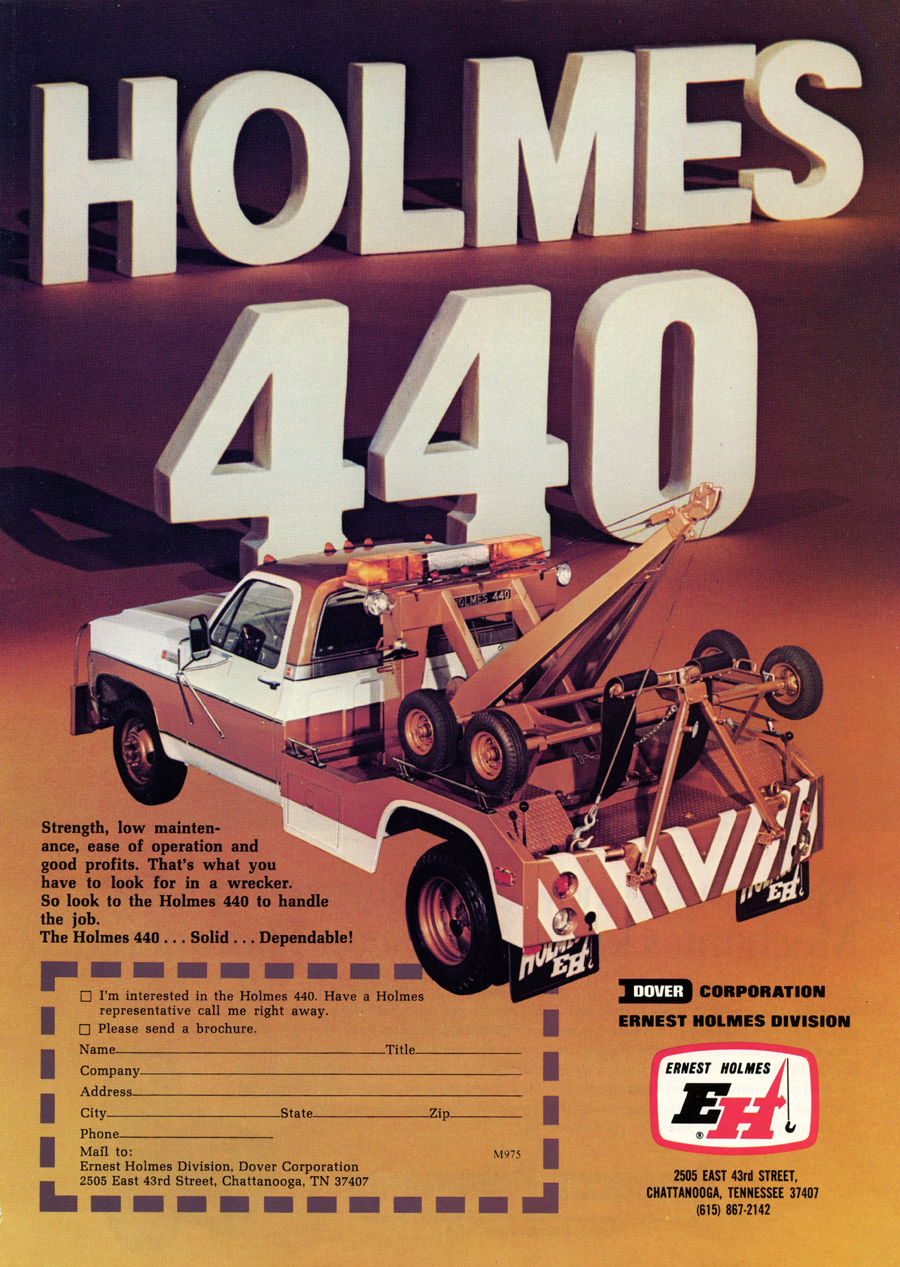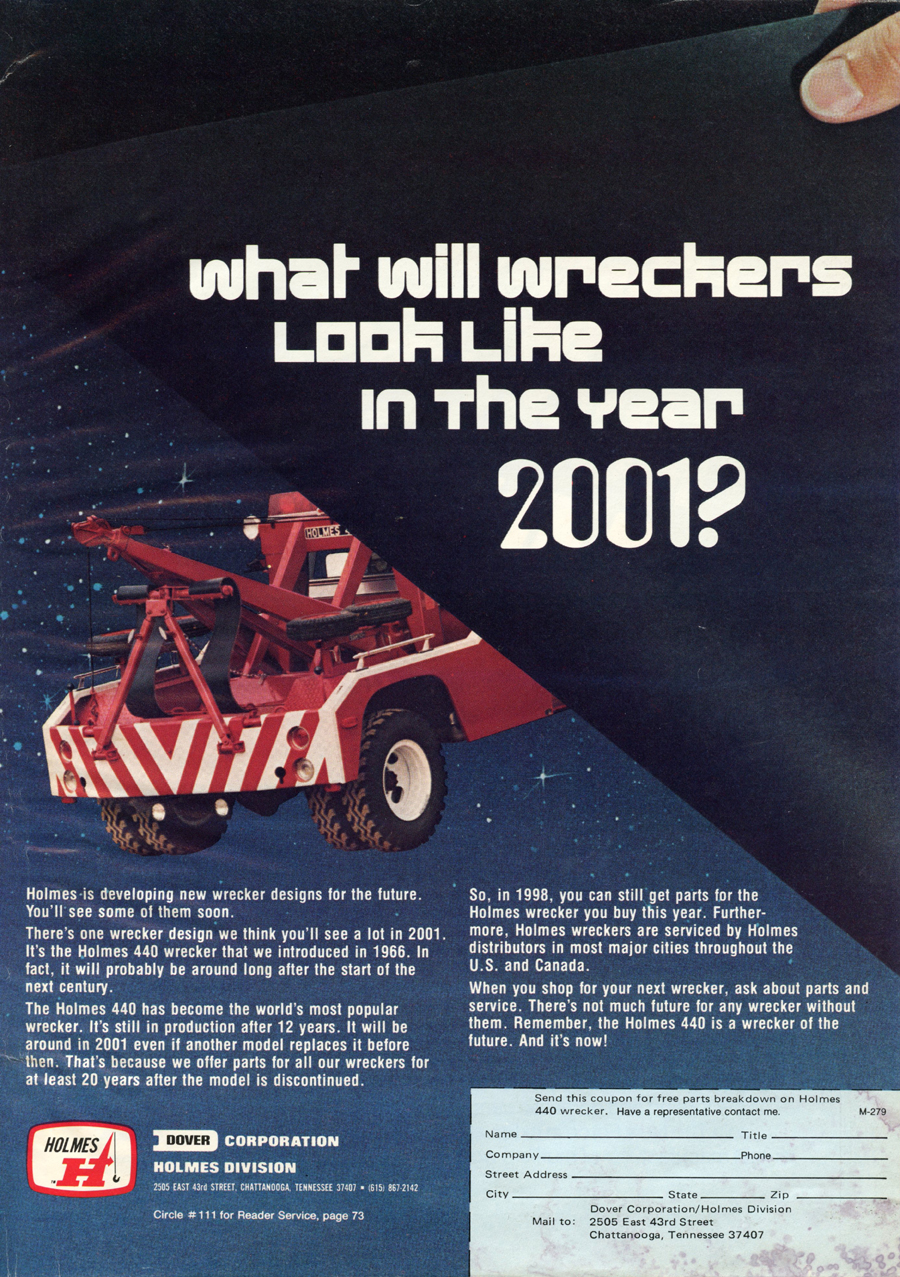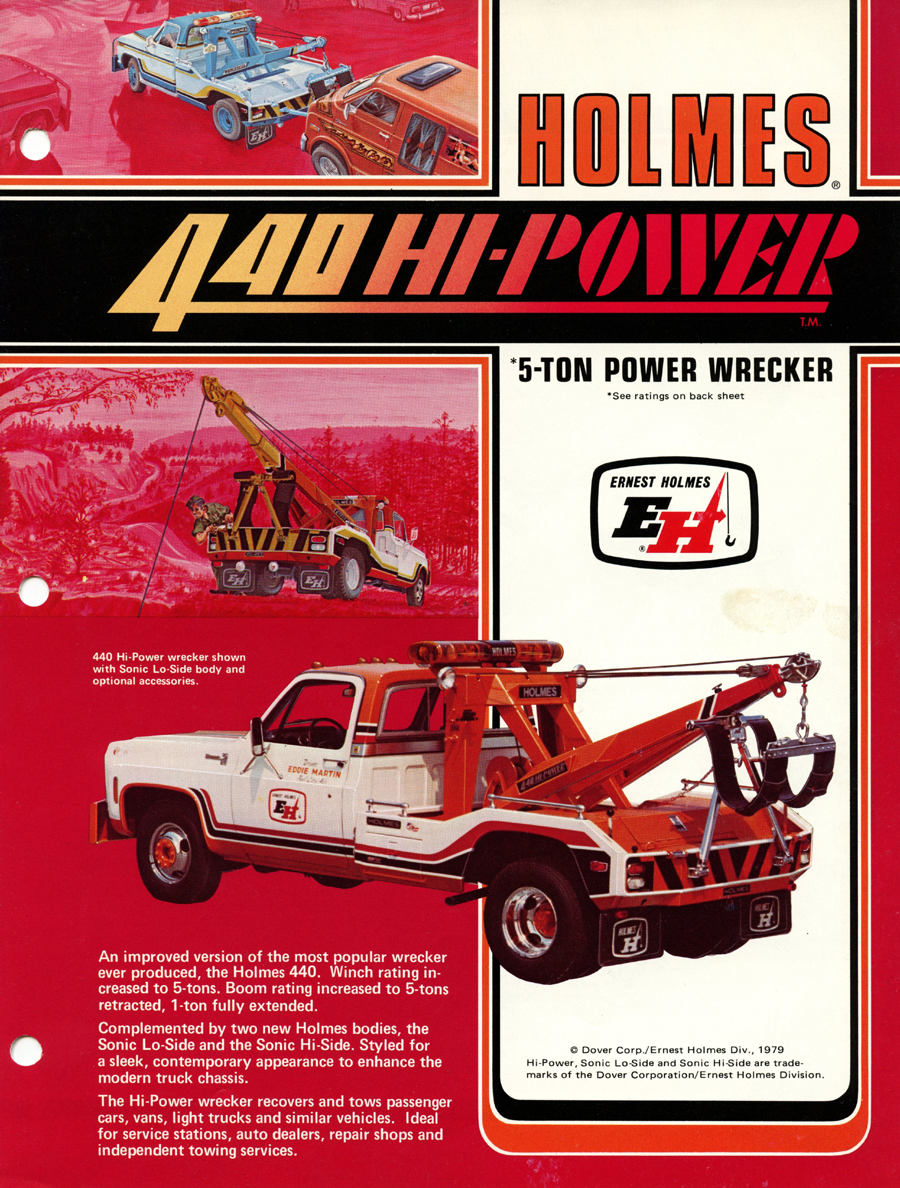 |
 The History of Holmes Wreckers |
 |
| History | Models | Identification | Links | Contact Us |
HOLMES 440
In the late 50’s and early 60’s Holmes was marketing the 400 and 400 RW wreckers to service stations; and they developed the new Holmes 440 for this market. Moving away from channel and angle iron frames the 440 offered a stylish formed steel head frame and body assembly with an extendable boom center section.
The first 440 was serial # A66CF – 101 and was shipped Jan 11, 1966 – all 440’s had “CF” as the ID code; 440 Hi Power were coded “CFH” and the rare factory hydraulic units had “HYD” at the end of the serial number.
|
Part of the excellent design of the 440 was running the support cable pulley to the end of the extension so that the boom is very resistant to bending. Although only rated at 1000 lbs at full extension it could easily pick up twice that with no issues. Useful for light recoveries, pulling engines, and floating damaged cars the extended boom was also popular at race tracks.
Using the Holmes manufactured HD winch with the rapid reverse and massive worm gear that was developed for the 400 RW it far outclassed all competitors.
The first generation (starting in 1966) had the square tailgate with a single D-ring in the center.
By the mid 60’s, with the development of the twin boom 480 an angled tailgate with the twin D-rings allowed for a tight turning circle when loaded.
|
In the late 70’s the 440 was upgraded from 4 ton to 5 ton rating with the introduction of the 440 Hi Power. The boom was also uprated to 2000 lbs at its full 5 foot extension.
Most of the 440 HP’s were supplied with the new stylish Sonic Body with hydro formed tail gate.
The weight of the unit was increased for the 440 HP, but the new Sonic Body was lighter than the original style so that helped keep the weight down for use on the one ton chassis.
|
In the early 80’s the shift controls were switched from rod and lever to push – pull cables as used on the hydraulics. This proved to be an issue as the cables would fail under load: most units were converted back to the rod and lever system.
By the mid 80’s wheel lifts were coming in and so the final version of the 440 HP was offered with a factory hydraulic drive on the winch – eliminating the sound of the PTO chain. An operator then had to listen to his cable when doing a recovery instead of relying on the change in pitch on the PTO chain to indicate when the limits of the equipment were being approached. Over 35,000 of the 440 variants were built making it the most popular wrecker ever built.
The parts book shows the formed steel components and boom system and the indestructible winch system.
|
This ’79 Ford with a classic Deluxe Body 440 was originally a Gulf Service Station wrecker in New Jersey. Featured in several magazines and a class winner in Baltimore it is one of the best surviving examples.
 |
A 440 on a Chev 1 ton was used as the poster truck of the 100th anniversary of Holmes Wreckers.
 |
| History | Models | Identification | Links | Contact Us |







